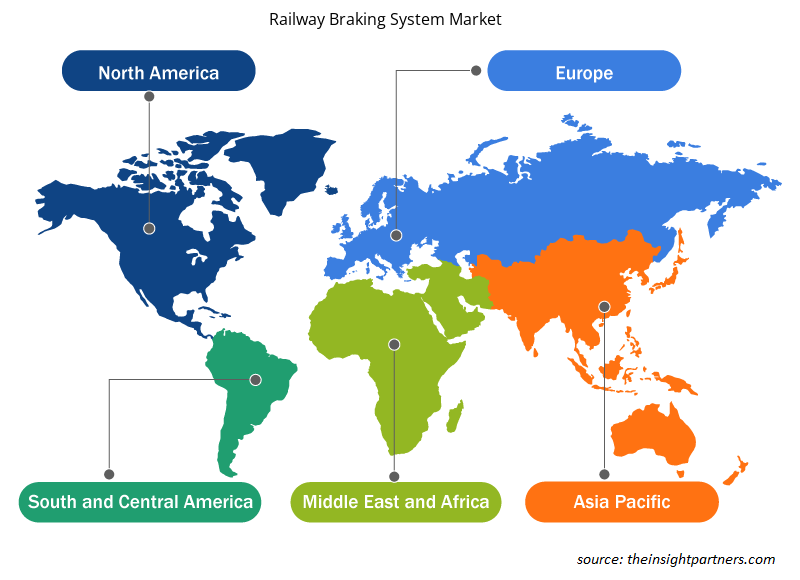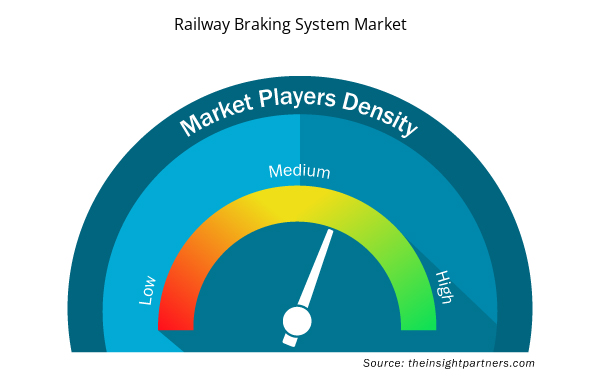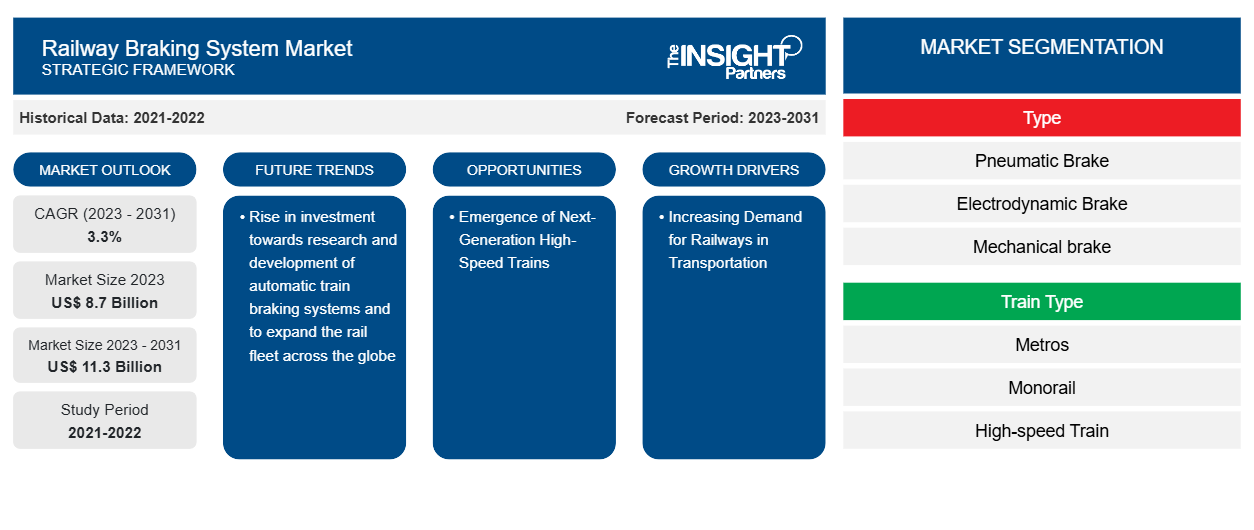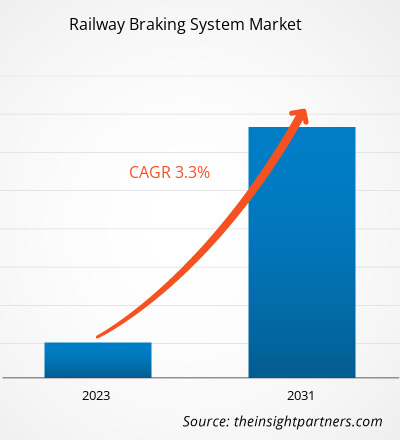鉄道ブレーキシステム市場規模は、2023年の87億米ドルから2031年には113億米ドルに達すると予測されています。市場は2023年から2031年にかけて3.3%のCAGRを記録すると予想されています。自動列車ブレーキシステムの研究開発への投資の増加と、世界中の鉄道車両の拡張は、鉄道ブレーキシステム市場を牽引する主要なトレンドの1つです。
鉄道ブレーキシステム市場分析
個人の移動手段としての鉄道輸送の需要の増加や、地下鉄、モノレール、高速鉄道における新しい線路や路線を建設する鉄道プロジェクトの増加などの要因。鉄道部門の拡大に向けた政府投資の増加と相まって、プロジェクトは鉄道部門の強化に向けて継続しています。鉄道部門の成長に伴い、ブレーキを含む安全システムの統合の範囲は大きな勢いを得ています。さらに、新興経済国における自動列車ブレーキシステム、自動列車運転、次世代高速鉄道の登場は、ブレーキシステムの市場成長を引き付けるもう1つの要因です。さらに、航空に比べて最も安価な輸送手段であるため、各国での大量パッケージと貿易の増加が鉄道の利用に影響を与えています。そのため、貨物ビジネスが活況を呈し、貨物鉄道の開発サイクルも増加しています。ライトレールの開発が進むにつれて、ブレーキシステムの統合も増加するでしょう。
鉄道ブレーキシステム市場の概要
持続可能性、都市化、モビリティ車両、デジタル化などの主要なメガトレンドを踏まえ、運輸業界は大きな成長を遂げています。上記のトレンドは、将来のモビリティに長期的かつ持続可能な成長の機会を提供することで、鉄道部門に利益をもたらすでしょう。さらに、鉄道部門には厳格な安全基準と品質基準があるため、高度なシステムと機器の統合が増加しています。鉄道部門では、二重弾性締結を備えた線路、自動運転、架空電力ケーブル/サードレール、通信ベースの列車制御信号システムは、地下鉄路線に統合されつつある数少ない技術の1つです。このような高度な技術を地下鉄レールに組み込むことは、レールブレーキシステムの統合範囲を拡大する上で重要な役割を果たすでしょう。
要件に合わせてレポートをカスタマイズする
このレポートの一部、国レベルの分析、Excelデータパックなど、あらゆるレポートを無料でカスタマイズできます。また、スタートアップや大学向けのお得なオファーや割引もご利用いただけます。
- このレポートの主要な市場動向を入手してください。この無料サンプルには、市場動向から見積もりや予測に至るまでのデータ分析が含まれます。
鉄道ブレーキシステム市場の推進要因と機会
輸送における鉄道の需要増加
鉄道輸送は、道路輸送と比較して、安全で経済的な輸送手段であると広く考えられています。高精度や最大限の地理的領域をカバーできるなどの要因に関連して、旅行者の需要が高まっています。列車、貨物、乗客の安全を確保するために、ブレーキシステムはレールで使用されるシステムの1つです。さらに、新しい鉄道インフラを構築し、列車の接続性を拡大するための投資を増やすためのドバイルート2020メトロなどの政府プロジェクトは、鉄道部門の成長に貢献しています。貨物輸送用の鉄道の需要も高まっています。鉄道で輸送される荷物や商品の量が増えるにつれて、列車の数も増えています。鉄道による貨物の大量輸送は、列車とその他の列車関連システムメーカーの両方に有利な機会を生み出しています。したがって、貨物輸送と鉄道乗客の増加という側面は、鉄道部門の成長を後押しし、各国政府が鉄道プロジェクトに多額の投資をする動機となっています。
次世代高速鉄道の登場
絶え間ない技術進歩の時代に、世界中の鉄道業界は、業界全体の変革に重要な役割を果たしている新しい技術とシステムを体験しています。たとえば、2024年4月、韓国は次世代の高速新幹線を発表します。この列車の最高速度は時速320キロです。さらに、2023年10月、フランスは次世代の高速TGV M列車を発表し、2025年に運行開始される予定です。このような技術の進歩と世界中の高速列車の出現は、予測期間中に鉄道ブレーキシステム市場の需要を促進すると予測されています。
また、次世代のエアディスクブレーキの登場は、レールの変革への道を切り開いています。さらに、ダイレクトブレーキシステムでは、ブレーキコマンドはより短いタイムラグで迅速に伝達されます。さらに、共同事業であるShift2Railは、運転手がタブレットを介してキャビンからブレーキをテストできるようにするデジタルブレーキテストソリューションに取り組んでいます。このデジタルブレーキテストソリューションは、柔軟性と安全性を高めながら、時間と人件費を節約するのに役立ちます。次世代モビリティの時代には、高速列車、デジタルテストブレーキソリューション、次世代ブレーキの出現が、鉄道部門を未来に備えるのに役立ちます。前述のすべての側面は、鉄道ブレーキシステムの採用において重要な位置を占めると予想されています。
鉄道ブレーキシステム市場レポートのセグメンテーション分析
鉄道ブレーキシステム市場分析の導出に貢献した主要なセグメントは、タイプと列車タイプです。
- 鉄道ブレーキシステム市場は、タイプ別に、空気圧ブレーキ、電動ブレーキ、機械ブレーキ、電磁ブレーキに分かれています。空気圧ブレーキセグメントは、2023年に大きな市場シェアを占めました。
- 列車の種類に基づいて、鉄道ブレーキシステム市場は、地下鉄、モノレール、高速列車、ライトレール/路面電車、貨物列車に分かれています。ライトレール/路面電車の路線セグメントは、2023年に大きな市場シェアを占めました。
地域別鉄道ブレーキシステム市場シェア分析
鉄道ブレーキシステム市場レポートの地理的範囲は、主に北米、ヨーロッパ、アジア太平洋、中東およびアフリカ、南米の 5 つの地域に分かれています。
2023年には、アジア太平洋地域が鉄道ブレーキシステム市場を席巻するでしょう。アジア太平洋地域には、オーストラリア、中国、日本、インド、韓国、およびその他のアジア太平洋地域が含まれます。安定した経済と技術の進歩が、この地域の多様な産業と市場の成長を支えています。東南アジア地域の地域鉄道ネットワークの接続性は、汎アジア鉄道ネットワークの下で既存のルートを接続するいくつかのプロジェクトの実施により向上しています。中国政府が支援および計画している新しい鉄道プロジェクトは、中国の昆明からバンコク、シンガポール、クアラルンプールまで伸びる東南アジア本土の主要都市間の接続を確保し、ラオスのビエンチャンからバンコクまでの中央線、ベトナムのハノイ市とホーチミン市、カンボジアのプノンペン市を通る東線、ミャンマーのヤンゴンを通る西線が予定されています。
インドネシアとフィリピンも、主要都市と主要島を結ぶ鉄道プロジェクトを計画しています。フィリピン、タイ、中国、インドの鉄道部門は、先進技術を統合して鉄道輸送を強化するために、それぞれの領土に巨額の投資を行っています。さらに、日本は、道路の混雑を緩和し、乗客の時間とお金の両方を節約するために高速鉄道の利用に取り組んでいる主要国の一つです。
鉄道ブレーキシステム市場の地域別分析
予測期間を通じて鉄道ブレーキ システム市場に影響を与える地域的な傾向と要因は、Insight Partners のアナリストによって徹底的に説明されています。このセクションでは、北米、ヨーロッパ、アジア太平洋、中東、アフリカ、南米、中米にわたる鉄道ブレーキ システム市場のセグメントと地理についても説明します。

- 鉄道ブレーキシステム市場の地域別データを入手
鉄道ブレーキシステム市場レポートの範囲
| レポート属性 | 詳細 |
|---|---|
| 2023年の市場規模 | 87億米ドル |
| 2031年までの市場規模 | 113億米ドル |
| 世界のCAGR(2023年~2031年) | 3.3% |
| 履歴データ | 2021-2022 |
| 予測期間 | 2023-2031 |
| 対象セグメント | タイプ別
|
| 対象地域と国 | 北米
|
| 市場リーダーと主要企業プロフィール |
|
市場プレーヤーの密度:ビジネスダイナミクスへの影響を理解する
鉄道ブレーキ システム市場は、消費者の嗜好の変化、技術の進歩、製品の利点に対する認識の高まりなどの要因により、エンド ユーザーの需要が高まり、急速に成長しています。需要が高まるにつれて、企業は提供内容を拡大し、消費者のニーズを満たすために革新し、新たなトレンドを活用し、市場の成長をさらに促進しています。
市場プレーヤー密度とは、特定の市場または業界内で活動している企業または会社の分布を指します。これは、特定の市場スペースに、その市場規模または総市場価値に対してどれだけの競合相手 (市場プレーヤー) が存在するかを示します。
鉄道ブレーキシステム市場で事業を展開している主要企業は次のとおりです。
- ダコ-CZ
- 曙ブレーキ工業株式会社
- アムステッド鉄道
- クノールブレムゼAG
- ナブテスコ株式会社
- セイバーレールサービス株式会社
免責事項:上記の企業は、特定の順序でランク付けされていません。

- 鉄道ブレーキシステム市場のトップキープレーヤーの概要を入手
鉄道ブレーキシステム市場のニュースと最近の動向
鉄道ブレーキ システム市場は、主要な企業出版物、協会データ、データベースなどの一次調査と二次調査後の定性的および定量的データを収集することによって評価されます。以下は、鉄道ブレーキ システム市場の動向と戦略のリストです。
- 2024年1月、ワブテック社はシーメンス・インディア・プライベート・リミテッド社に1億5,700万米ドル相当のブレーキシステムを発注しました。この供給契約を通じて、シーメンス社は新型電気機関車1,200台に、動作性能、効率性、安全性が向上したブレーキシステムを提供します。
- 2023年10月、シーメンス モビリティは新しいエアフリー ブレーキ システムを発売しました。この新しいブレーキ システムは、鉄道車両の摩擦ブレーキの完全な電動制御を可能にし、同社の製品ポートフォリオを強化します。
鉄道ブレーキシステム市場レポートの対象範囲と成果物
「鉄道ブレーキシステム市場規模と予測(2021〜2031年)」レポートでは、以下の分野をカバーする市場の詳細な分析を提供しています。
- 対象範囲に含まれるすべての主要市場セグメントについて、世界、地域、国レベルでの市場規模と予測
- 市場の動向(推進要因、制約、主要な機会など)
- 今後の主な動向
- ポーターのファイブフォース分析の詳細
- 主要な市場動向、主要プレーヤー、規制、最近の市場動向を網羅した世界および地域の市場分析
- 市場集中、ヒートマップ分析、主要プレーヤー、最近の動向を網羅した業界の状況と競争分析
- SWOT分析による詳細な企業プロフィール
- 過去2年間の分析、基準年、CAGRによる予測(7年間)
- PEST分析とSWOT分析
- 市場規模価値/数量 - 世界、地域、国
- 業界と競争環境
- Excel データセット



Report Coverage
Revenue forecast, Company Analysis, Industry landscape, Growth factors, and Trends

Segment Covered
This text is related
to segments covered.

Regional Scope
North America, Europe, Asia Pacific, Middle East & Africa, South & Central America

Country Scope
This text is related
to country scope.
Trends and growth analysis reports related to Automotive and Transportation : READ MORE..
The Insight Partners performs research in 4 major stages: Data Collection & Secondary Research, Primary Research, Data Analysis and Data Triangulation & Final Review.
- Data Collection and Secondary Research:
As a market research and consulting firm operating from a decade, we have published and advised several client across the globe. First step for any study will start with an assessment of currently available data and insights from existing reports. Further, historical and current market information is collected from Investor Presentations, Annual Reports, SEC Filings, etc., and other information related to company’s performance and market positioning are gathered from Paid Databases (Factiva, Hoovers, and Reuters) and various other publications available in public domain.
Several associations trade associates, technical forums, institutes, societies and organization are accessed to gain technical as well as market related insights through their publications such as research papers, blogs and press releases related to the studies are referred to get cues about the market. Further, white papers, journals, magazines, and other news articles published in last 3 years are scrutinized and analyzed to understand the current market trends.
- Primary Research:
The primarily interview analysis comprise of data obtained from industry participants interview and answers to survey questions gathered by in-house primary team.
For primary research, interviews are conducted with industry experts/CEOs/Marketing Managers/VPs/Subject Matter Experts from both demand and supply side to get a 360-degree view of the market. The primary team conducts several interviews based on the complexity of the markets to understand the various market trends and dynamics which makes research more credible and precise.
A typical research interview fulfils the following functions:
- Provides first-hand information on the market size, market trends, growth trends, competitive landscape, and outlook
- Validates and strengthens in-house secondary research findings
- Develops the analysis team’s expertise and market understanding
Primary research involves email interactions and telephone interviews for each market, category, segment, and sub-segment across geographies. The participants who typically take part in such a process include, but are not limited to:
- Industry participants: VPs, business development managers, market intelligence managers and national sales managers
- Outside experts: Valuation experts, research analysts and key opinion leaders specializing in the electronics and semiconductor industry.
Below is the breakup of our primary respondents by company, designation, and region:

Once we receive the confirmation from primary research sources or primary respondents, we finalize the base year market estimation and forecast the data as per the macroeconomic and microeconomic factors assessed during data collection.
- Data Analysis:
Once data is validated through both secondary as well as primary respondents, we finalize the market estimations by hypothesis formulation and factor analysis at regional and country level.
- Macro-Economic Factor Analysis:
We analyse macroeconomic indicators such the gross domestic product (GDP), increase in the demand for goods and services across industries, technological advancement, regional economic growth, governmental policies, the influence of COVID-19, PEST analysis, and other aspects. This analysis aids in setting benchmarks for various nations/regions and approximating market splits. Additionally, the general trend of the aforementioned components aid in determining the market's development possibilities.
- Country Level Data:
Various factors that are especially aligned to the country are taken into account to determine the market size for a certain area and country, including the presence of vendors, such as headquarters and offices, the country's GDP, demand patterns, and industry growth. To comprehend the market dynamics for the nation, a number of growth variables, inhibitors, application areas, and current market trends are researched. The aforementioned elements aid in determining the country's overall market's growth potential.
- Company Profile:
The “Table of Contents” is formulated by listing and analyzing more than 25 - 30 companies operating in the market ecosystem across geographies. However, we profile only 10 companies as a standard practice in our syndicate reports. These 10 companies comprise leading, emerging, and regional players. Nonetheless, our analysis is not restricted to the 10 listed companies, we also analyze other companies present in the market to develop a holistic view and understand the prevailing trends. The “Company Profiles” section in the report covers key facts, business description, products & services, financial information, SWOT analysis, and key developments. The financial information presented is extracted from the annual reports and official documents of the publicly listed companies. Upon collecting the information for the sections of respective companies, we verify them via various primary sources and then compile the data in respective company profiles. The company level information helps us in deriving the base number as well as in forecasting the market size.
- Developing Base Number:
Aggregation of sales statistics (2020-2022) and macro-economic factor, and other secondary and primary research insights are utilized to arrive at base number and related market shares for 2022. The data gaps are identified in this step and relevant market data is analyzed, collected from paid primary interviews or databases. On finalizing the base year market size, forecasts are developed on the basis of macro-economic, industry and market growth factors and company level analysis.
- Data Triangulation and Final Review:
The market findings and base year market size calculations are validated from supply as well as demand side. Demand side validations are based on macro-economic factor analysis and benchmarks for respective regions and countries. In case of supply side validations, revenues of major companies are estimated (in case not available) based on industry benchmark, approximate number of employees, product portfolio, and primary interviews revenues are gathered. Further revenue from target product/service segment is assessed to avoid overshooting of market statistics. In case of heavy deviations between supply and demand side values, all thes steps are repeated to achieve synchronization.
We follow an iterative model, wherein we share our research findings with Subject Matter Experts (SME’s) and Key Opinion Leaders (KOLs) until consensus view of the market is not formulated – this model negates any drastic deviation in the opinions of experts. Only validated and universally acceptable research findings are quoted in our reports.
We have important check points that we use to validate our research findings – which we call – data triangulation, where we validate the information, we generate from secondary sources with primary interviews and then we re-validate with our internal data bases and Subject matter experts. This comprehensive model enables us to deliver high quality, reliable data in shortest possible time.


 このレポートの無料サンプルを入手する
このレポートの無料サンプルを入手する